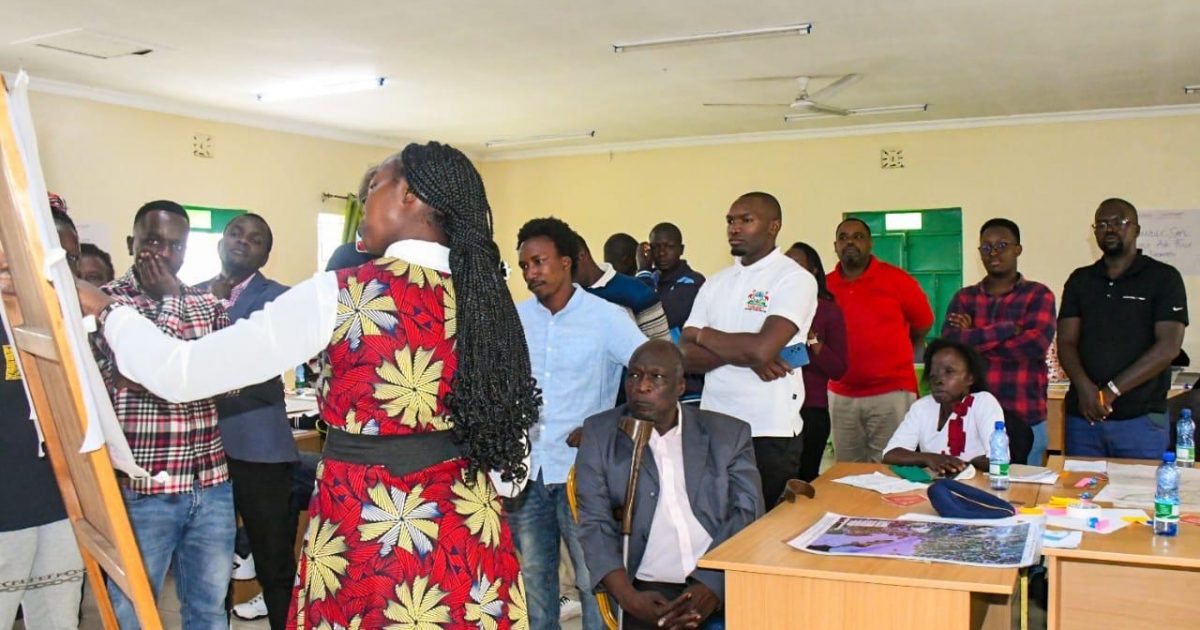Nakuru County Government is putting in place comprehensive disaster preparedness strategies that will facilitate quicker response to high-risk occurences such as floods, sinkholes, fires, drought and major accidents among others.
City Manager Mr Gitau Thabanja stated that despite the rise in extreme weather events and threats posed by climate change, urbanisation does not have to lead to an increase in risks posed by disasters.
“We are demonstrating leadership and competence by working with low-income populations living in informal settlements to reduce flood impacts and minimise threats from other natural hazards,” stated Mr Thabanja.
The City Manager indicated that the devolved unit’s administration was sustaining a campaign that provides a critical forum for experts and policy makers to raise awareness, learn about disaster risk reduction, share ideas and identify solutions.
He spoke during a workshop on disaster preparedness and mitigation organised by the County Government with support from Tomorrow Cities and UN-Habitat that brought together residents, experts and individuals ravaged by devastating floods and heavy rains that have been plaguing the city.
Mr Thabanja added that Governor Susan Kihika’s administration was encouraging integration of disaster risk reduction into other activities, including education, livelihoods, health, environment, and planning, either by incorporating risk considerations into existing activities or initiating projects that address multiple issues simultaneously.
The Manager outlined Nakuru city’s challenges as rampant urbanisation, poor urban planning, inadequate infrastructure, and the increasing frequency of extreme weather events precipitated by climate change.
To mitigate these risks, he explained the County Government and its partners were focusing on several key areas, including a detailed geological survey of the city and capacity building for the city’s technical team through training and knowledge transfer.
The City Manager added that civic education and community engagement initiatives will be implemented to raise awareness about disaster preparedness as well as the development of a comprehensive storm water master plan.
He explained that part of the approach was to empower the community to have ample time to evacuate or take protective measures adding this will save countless lives and reduce economic losses.
The strategy, he noted, would include – developing and regularly rehearsing emergency response plans, ensuring that evacuation routes are well-maintained, and accessible. In addition, social and behaviour change programmes to help people, modify their beliefs, attitudes and adopt new ways of perceiving risks, and change behaviours, will be part of the package.
‘Tomorrow’s Cities’ is the UK Research and Innovation (UKRI) Global Challenges Research Fund (GCRF) and an Urban Disaster Risk Hub. The five-year global interdisciplinary research project is one of 12 UKRI GRCF Hubs funded through an UKRI Collective Fund award, as part of the UK AID strategy to drive research towards delivering the United Nations Sustainable Development Goals (SDGs).
The collaborative effort involving 12 UK research organisations and 42 global partners carries its operations from four cities of Quito (Ecuador), Nairobi (Kenya), Istanbul (Turkey)and Kathmandu (Nepal) – to engage communities, coordinate research and inform decision-making about urban hazard risk management.
Combining local knowledge with research expertise, ‘Tomorrow’s Cities’ work includes utilising drone photography to engage communities and help map the probabilities of natural disasters. It works alongside local authorities and people in urban areas so that they can plan for, prevent and respond to the multiple hazards that threaten their communities.
Mr Thabanja indicated that the partnership with the UK based – Tomorrow’s Cities will involve investing in robust early warning systems that leverage advanced weather forecasting, risk modelling, and community centered risk communication approaches.
“The devastation caused by natural calamities such as the Mai Mahiu flood disaster should be a stark reminder of Kenya’s extreme vulnerability to climate-fueled hazards. Due to perennial floods and other natural disasters that have caused havoc across the country, the question is no longer “if” another disaster will strike, but rather “when” and “where,”” stated the City Manager.
Mr Thabanja pointed out that Kenya must shift its focus from reactive responses to more proactive measures to disaster management and that the country needs to embrace anticipatory action approaches to risks and disaster management to mitigate the impact of future catastrophes.
He expressed regret that despite the increasing frequency and intensity of extreme weather events, many Kenyan communities remain ill-equipped to cope with such disasters mainly because there are limited or no early warning systems among many communities in Kenya and those available are often unreliable.
“Often, this leaves many people unaware of impending disasters. The consequences of such gaps are often devastating. Lives are lost, livelihoods destroyed, and economic progress is set back years, if not decades. It’s a vicious cycle that perpetuates poverty and vulnerability, particularly among marginalised communities who often live in hazard-prone areas,” observed Mr Thabanja.
In flood-prone areas, the City manager indicated that the devolved unit’s administration was reinforcing critical infrastructure like dams and bridges to withstand extreme rainfall, and exploring other nature-based solutions.
He assured that the County Government was setting up a climate change response initiative framework, a comprehensive action plan and resource mobilisation.
Mr Thabanja explained that establishing community-driven data/knowledge systems linked to higher-level policy spaces is necessary to inform context-specific and adaptive responses to disasters.
By Jane Ngugi





